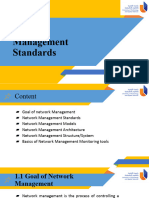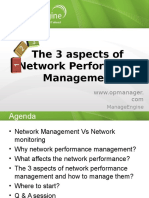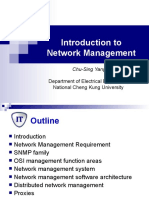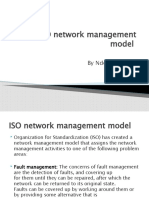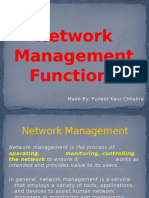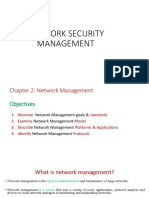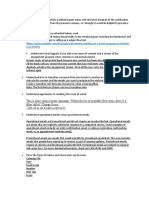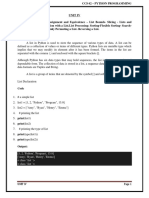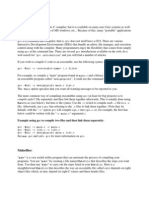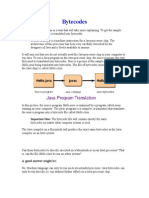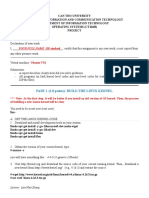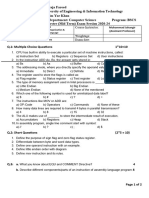0% found this document useful (0 votes)
32 views8 pagesNetwork Management and Configuration Note
This document outlines the principles and practices of network management and configuration, emphasizing its importance for reliable and secure communication in organizations. It covers key components such as fault, configuration, performance, security, and accounting management, along with tools and best practices for effective network oversight. The document also discusses challenges and future trends, including AI integration and the rise of SD-WAN, highlighting the need for organizations to adapt to evolving technologies.
Uploaded by
muneirmuni834Copyright
© © All Rights Reserved
We take content rights seriously. If you suspect this is your content, claim it here.
Available Formats
Download as DOCX, PDF, TXT or read online on Scribd
0% found this document useful (0 votes)
32 views8 pagesNetwork Management and Configuration Note
This document outlines the principles and practices of network management and configuration, emphasizing its importance for reliable and secure communication in organizations. It covers key components such as fault, configuration, performance, security, and accounting management, along with tools and best practices for effective network oversight. The document also discusses challenges and future trends, including AI integration and the rise of SD-WAN, highlighting the need for organizations to adapt to evolving technologies.
Uploaded by
muneirmuni834Copyright
© © All Rights Reserved
We take content rights seriously. If you suspect this is your content, claim it here.
Available Formats
Download as DOCX, PDF, TXT or read online on Scribd
/ 8



















